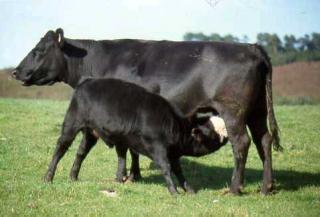Epidemiological Studies Enhancing Management Of Livestock Health & Wellbeing Through Improved Endemic Disease Control
Published on 24 February 2009 in Food, health and wellbeing

Introduction
These studies help promote improved disease control for common diseases on Scottish sheep and cattle farms through the generation of new knowledge and subsequent integration with under utilised existing knowledge. A major part of this research is learning how to integrate the skills of scientists from a range of disparate disciplines including social sciences. An additional feature is the development of more effective knowledge exchange and knowledge transfer mechanisms. Scotland's ambitions for a wealthier, healthier, safer, stronger and greener country depend on the image it portrays to the rest of the world. As many recent incidents have confirmed, this depends in large part on smarter, better informed, farmers in charge of healthier animals. Our work is aimed at disease prevention and avoidance but recognises that what is best for one farm business is not necessarily best for the rest. The starting place for our expanding project was a QMS sponsored survey of farmers' opinions about the most important endemic beef, dairy and sheep diseases. We first asked for disease ranking by economic impact and then for welfare. Diseases choices were also guided by the Scottish Government Advisory Committee and availability of the best available expertise. The latest information about these debilitating diseases is derived and collated into an accessible form by veterinary medicine specialists, epidemiologists and disease modellers. Integrated disease models are evolved, capable of estimating the outcomes of infection and providing the basis of economic evaluation. The results present stakeholders with a range of likely disease scenarios, tailored for their own farms and with the consequences of alternative control strategies clearly presented. But the work doesn't end there. Our team draws feedback direct from the industry, in particular the project veterinary advisory panel and study farms, responding to their experience, identifying gaps in knowledge, guiding researchers accordingly and hence repeating the cycle. With this system we hope to provide the best available information for decision makers to help enhance the image of Scotland.
Key Points
This project involves about 15 research staff from SAC, BioSS and Moredun Research Institute. Disciplines involved include veterinary epidemiology, population medicine, animal health economics, computer science, statistics, farm management, mathematical modelling, microbiologists and pathogenesis specialists. QMS sponsored the farmer survey with additional support coming from the core project. A flexible fund promoted integration of researchers from SAC ERU, BioSS and MRI using enzootic abortion in ewes and ovine pneumonia complex as exemplars. Our final delivery is envisaged to be a web-accessible interface to our computer models that can be used by farmers with their veterinary advisers (prototypes for this interface already exist using Microsoft’s ‘access’ database). The novelty includes successful integration of skills and information (some old, some new) through a network of overlapping interests and expertise united to help the livestock industry optimise both production and promotion.
Research Undertaken
For example the QMS survey identified calf pneumonia as one of the most important diseases for beef / dairy farmers from both financial and animal welfare perspectives. Unfortunately, the condition is complex and results from of a combination of stress factors, viral and bacterial infections the implications of which will depend on individual farm circumstances. The extent of the variation in outcomes is apparent in this sample of 152 field outbreaks:
.jpg)
Figure 1 suggests that most farmers will experience mild cases and thus perhaps underestimate the potential risks from the more extreme incidents. An important predisposing factor for bovine pneumonia is the presence of Bovine Viral Diarrhoea Virus (BVDV). Our modelling work suggests that freedom from this pathogen provides much greater incentive to invest in prevention methods (Table 1):
|
Prevention strategy
|
BVDV free farm
|
BVDV status unknown
|
|
Vaccine plus biosecurity
|
26
|
13
|
|
Biosecurity alone
|
12
|
2
|
Table 1: Maximum net benefit (£/cow/year) from investment in BVDV prevention in a 50-cow Scottish beef suckler herd
Policy Implications
Our work supports the Animal Health and Welfare Strategy by improving farmers’ and other stakeholders’ understanding of the best control strategies relative to costs and benefits of alternative investments in farm animal disease prevention. This is essential if the vision for healthy livestock through better disease prevention is to be realised. Our information systems will facilitate cost sharing and other partnership initiatives between farmers and Government, leading to benefits for all concerned. For example, Government supports farmer-led health schemes allowing farmers to test their cattle for freedom from BVDV and other endemic diseases thus ensuring the benefits set out in Table 1. Farmers that test their stock for freedom from BVDV and then sell on to other farmers spread the above benefits even more widely.
Author
Prof. George J Gunn, SRUC george.gunn@sruc.ac.uk







